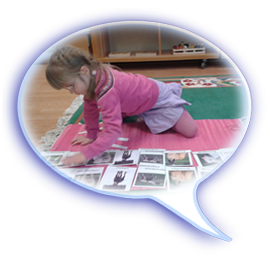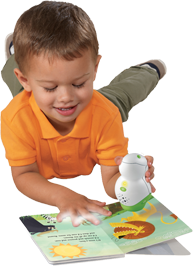
Dr. Maria Montessori developed revolutionary teaching techniques by observing the way children learn. Her methods remain effective ninety years later.
Maria Montessori believed that "…all children are endowed with capacity to 'absorb' culture" and, if exposed to things could learn them without feeling like they were being taught. Her observation was that in this way they learned happily and without tiring. It started with reading, and the astonishing fact that many children with proper access to resources would easily learn to read at the age of four. Then they expanded the learning to a vast array of other areas from botany to mathematics and more. The children learned spontaneously and with creativity.
She believed that children learned through exposure to cultural activities. She said that the teacher's role was not to teach, but to prepare and arrange a series of learning opportunities which each child can move through instinctively.
Montessori agreed and this concept became the backbone of her methods. Through careful observation of her mentally challenged children she was able to determine what worked best with them and when. It was easy to see that development stages were different for each child and optimum learning occurs when the child is ready. But the teacher must be ready, as well, and therefore always watching for signs it is time to present more material. In two years time some of her "deficient" students were able to pass standard tests for Italian School Children. She was lauded for this achievement but replied that public schools should be able to get far better results, then, with her methods, than with their traditional ones.
The government didn't allow her that chance, so she started to work with poor day care children too young to attend school. These children were examples of the worst poverty can bring out of people, and at first Montessori doubted her methods could work under these conditions. However, she gave them a try and her successes were even greater than with the retarded children. These children did not need to be prodded to participate as the hospitalized children did. They were eager to learn and begged for more. They were fascinated by numbers and were adding four and five digit numbers at the ages of four and five. Their enthusiasm was so great that Montessori spent many nights awake into the wee hours making new learning tools for them. Her style of mathematics blocks and tiles are still in use today.
During the time at these "Children's Houses" she quit her work as a physician and began to work exclusively advocating for children's educational opportunities. Montessori observed that if children have an orderly place to work and learn they take great pride in it and care well for the learning tools. They are able to sit quietly and learn for long periods of time- far longer than in normal everyday settings. She had carpenters build the first ever child sized school chairs and desks to make them comfortable for learning. She didn't make them do all their learning at desks, however. She created seating areas on the floor with rugs and pillows, and standing learning stations as well.
Montessori taught her methods in many countries including Africa, Sri Lanka, India, and various parts of Europe. Anna Freud, Jean Piaget, Alfred Adler, and Erik Erikson studied under Montessori and went on to make their own contributions to the understanding of education.

